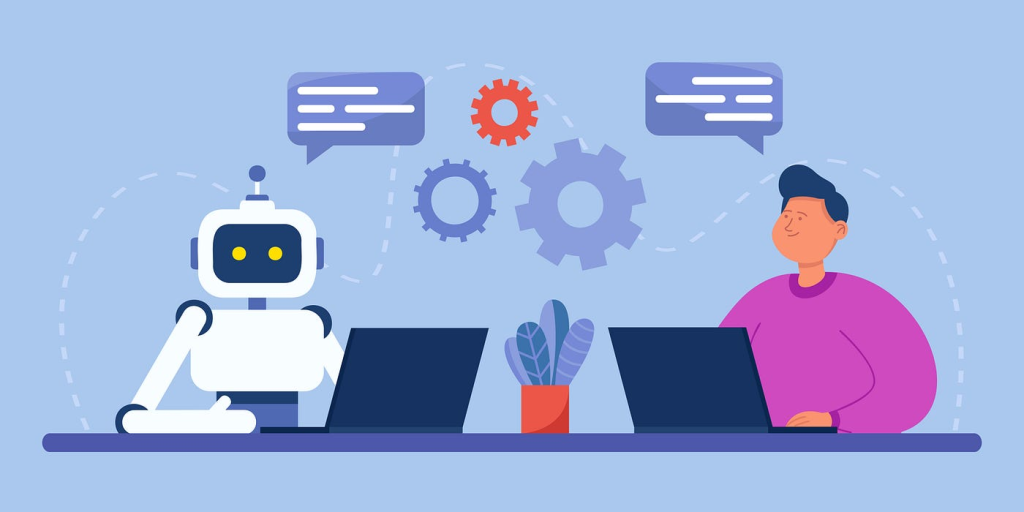In the highly competitive world of e – commerce, keeping operational costs in check is crucial for long – term success. Artificial Intelligence (AI) has emerged as a powerful tool that can help e – commerce platforms cut down on various expenses. Here’s how these platforms can leverage AI to reduce costs.

I. Optimizing Inventory Management
A. Precise Demand Forecasting
- Historical Data Analysis
AI algorithms can analyze vast amounts of historical sales data. By examining past trends, seasonality, and customer behavior patterns, e – commerce platforms can accurately predict future demand. For example, an online electronics store can use AI to analyze previous years’ sales of smartphones during holiday seasons. This helps in stocking the right quantity of products, avoiding overstocking that ties up capital and understocking that leads to lost sales. - Real – Time Data Incorporation
AI also takes into account real – time data such as current market trends, competitor pricing, and social media sentiment. For instance, if a particular product is suddenly trending on social media, AI can quickly detect this and adjust the demand forecast accordingly. This ensures that the inventory levels are always in sync with the market demand.
B. Inventory Optimization
- Dynamic Pricing Adjustments
Based on the demand forecast, AI can help with dynamic pricing. When inventory levels are high, the platform can use AI to suggest price cuts to boost sales and clear excess stock. Conversely, when demand is high and inventory is low, prices can be adjusted upwards. A clothing e – commerce platform might lower the prices of summer dresses at the end of the season to sell the remaining stock faster. - Just – in – Time (JIT) Inventory Management
AI enables the implementation of JIT inventory strategies. By accurately predicting when products will be needed, e – commerce platforms can reduce the amount of inventory they hold at any given time. This minimizes storage costs and the risk of inventory obsolescence. For example, an online toy store can use AI to ensure that new toy arrivals coincide with the peak demand periods, like the holiday season.
II. Streamlining Customer Service
A. Chatbots for Customer Support
- 24/7 Availability
AI – powered chatbots can provide round – the – clock customer support. They can answer frequently asked questions, resolve basic issues, and guide customers through the shopping process. For example, if a customer has a question about the shipping time of a product on an e – commerce platform, the chatbot can quickly provide the relevant information, reducing the need for human customer service representatives to be available at all times. - Handling High – Volume Inquiries
During peak shopping seasons or promotional events, e – commerce platforms often receive a large number of customer inquiries. Chatbots can handle these high – volume inquiries efficiently, without getting overwhelmed. They can handle multiple conversations simultaneously, ensuring that customers get quick responses and improving overall customer satisfaction.

B. Automated Complaint Resolution
- Natural Language Processing (NLP) for Complaint Analysis
AI uses Natural Language Processing to analyze customer complaints. It can understand the nature of the problem, whether it’s a product – related issue, a shipping problem, or a billing concern. For example, if a customer complains about a defective product, the AI system can quickly categorize the complaint and route it to the appropriate department for resolution. - Automated Solutions for Common Complaints
For common complaints, AI can provide automated solutions. If a customer reports a delay in delivery, the AI can check the shipping status, provide an updated delivery time, and offer a small discount or a coupon as compensation. This not only resolves the issue quickly but also reduces the workload on human customer service teams.
III. Enhancing Marketing Efficiency
A. Targeted Marketing Campaigns
- Customer Segmentation
AI can analyze customer data to segment customers into different groups based on demographics, purchase history, browsing behavior, and interests. For example, an e – commerce platform can identify customers who are frequent buyers of luxury products and target them with exclusive offers for high – end items. This ensures that marketing efforts are focused on the right audience, increasing the likelihood of conversion and reducing wasted marketing spend. - Personalized Marketing Messages
Based on the customer segments, AI can generate personalized marketing messages. These messages are tailored to the specific needs and interests of each customer group. For instance, a beauty e – commerce platform can send personalized emails to customers who have previously purchased anti – aging products, promoting new anti – aging serums and providing tips on skincare routines.
B. Predictive Marketing Analytics
- Return on Investment (ROI) Prediction
AI can predict the return on investment for different marketing campaigns. By analyzing historical data on marketing spend, customer acquisition, and sales, it can estimate the potential impact of a new campaign. For example, an e – commerce platform can use AI to predict how much revenue a Facebook advertising campaign is likely to generate before launching it. - Campaign Optimization in Real – Time
During the course of a marketing campaign, AI can analyze the performance data in real – time and make adjustments to optimize the campaign. If an AI – powered system detects that a particular ad is not performing well, it can automatically stop running that ad and reallocate the marketing budget to more effective ads. This helps in maximizing the marketing budget and reducing costs associated with ineffective campaigns.

In conclusion, AI offers e – commerce platforms multiple ways to reduce operational costs. From optimizing inventory management and streamlining customer service to enhancing marketing efficiency, AI – driven solutions can lead to significant cost savings and improved profitability. As technology continues to advance, e – commerce platforms that embrace AI will have a competitive edge in the market.



